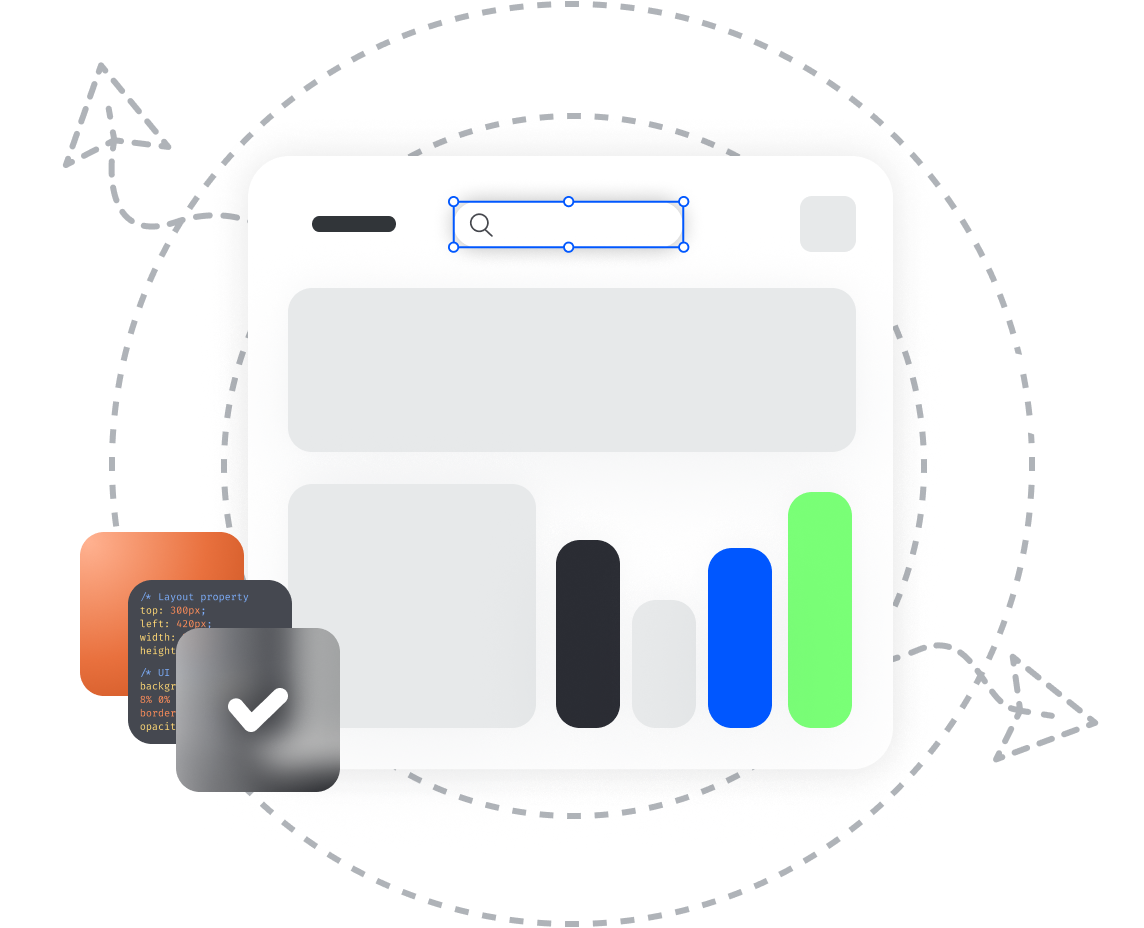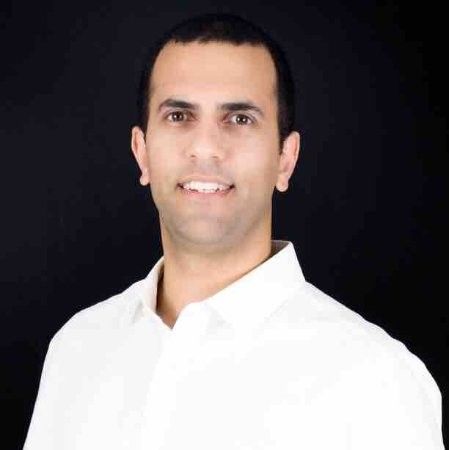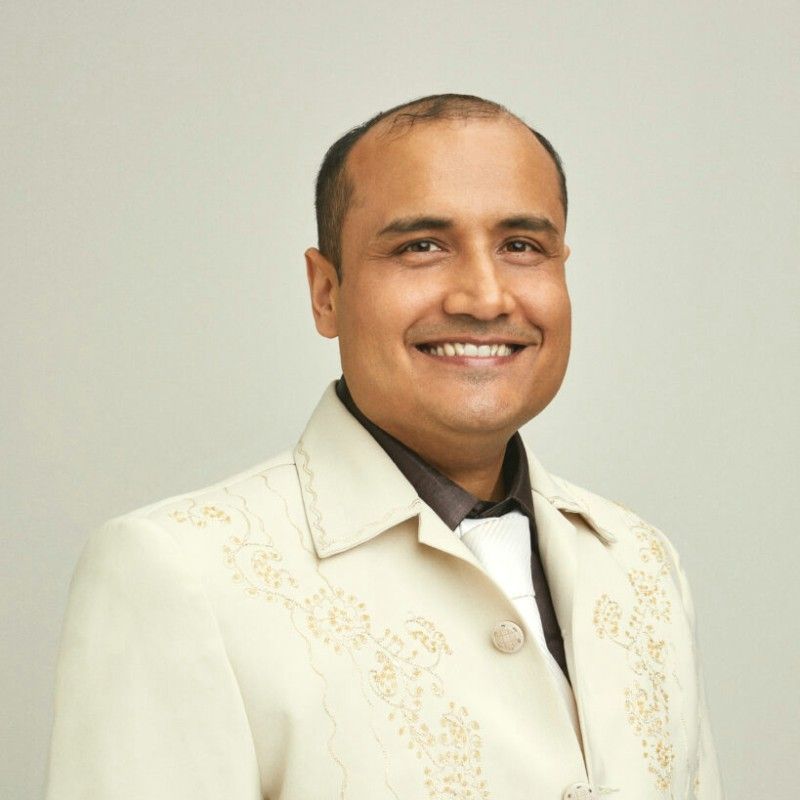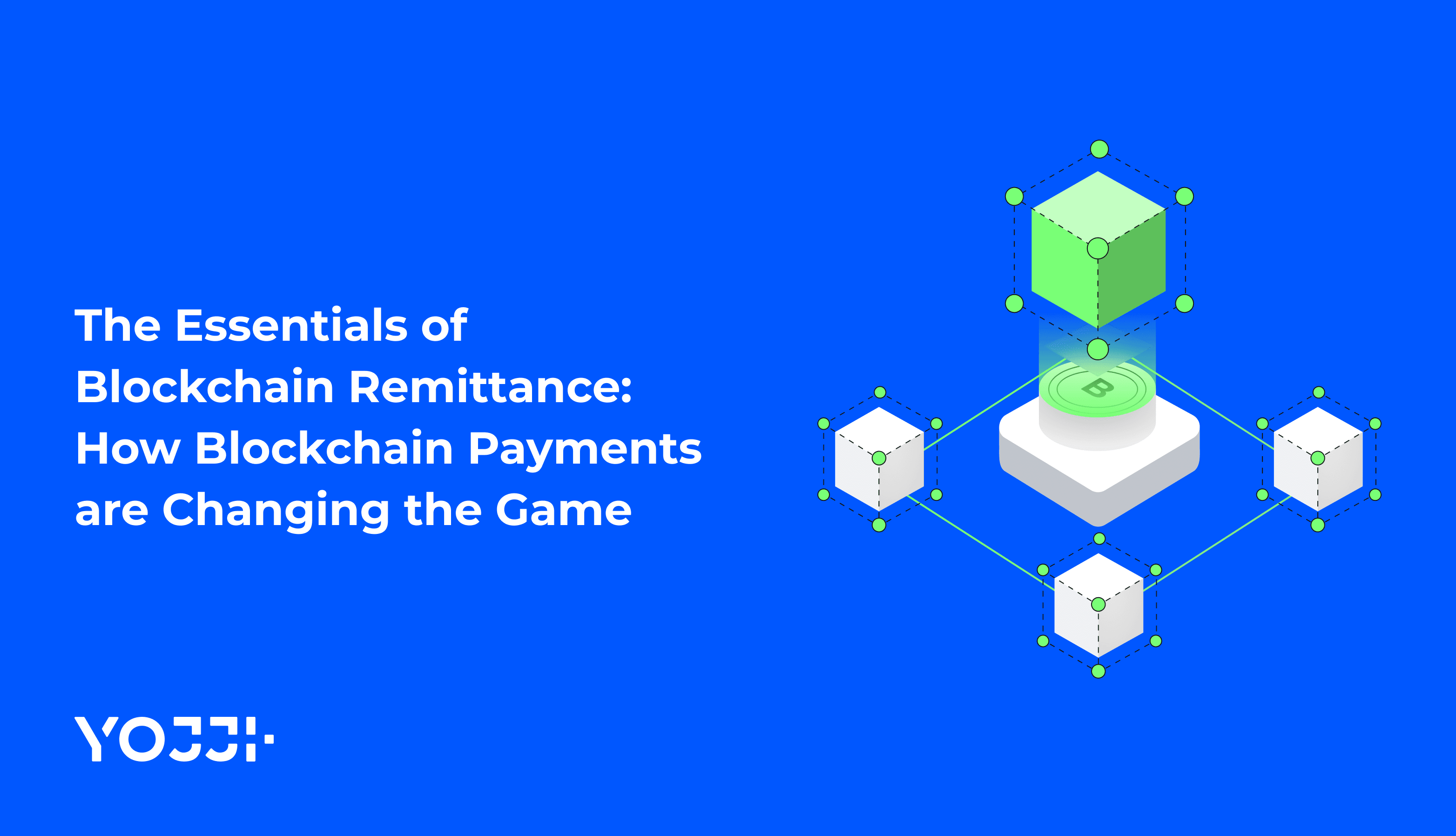Healthcare Technology Trends of 2024: What Changes to Expect

Affordable and efficient care is the backbone of the nation’s health. Although many new technologies have been implemented in patient care in recent years, the changes aren’t going anywhere. Data shows the health tech market is expected to rise to $200 billion by 2022 and $1069.13 billion by 2032. This estimate suggests that the CAGR would increase by 18.30% between 2023 and 2032. We should expect healthcare to become super dynamic and efficient, but there are also high chances new technologies might provide more drawbacks than benefits. So, without further ado, let’s find out what to expect in 2024 and beyond.
AI-Powered Diagnostics and Predictive Analytics
Healthcare is already being transformed by artificial intelligence. These days, crucial volumes of data may be analyzed by cutting-edge ML models with never-before-seen speed and precision. AI algorithms are utilized by Google's DeepMind and IBM's Watson Health to ensure an early diagnosis of various kinds of diseases, including cardiovascular diseases, cancer, or Alzheimer's illness. AI’s capability to analyze imaging data from CT, MRI, and X-ray images helps radiologists to find anomalies. A portion of them are invisible to the naked eye.
Predictive analytics with AI is one of the main trends. Medical practitioners are using AI more and more to predict patient outcomes using historical data. This helps clinicians preempt possible complications. Tempus and PathAI have relied on AI-driven platforms to analyze genomic data and find tailored treatment plans for oncology patients. This would involve precision medicine that personalizes therapies according to one's genetic makeup. Since this approach targets the individual, treatments effectively reduce adverse effects.
AI-powered diagnostics also make real-time decisions within emergency settings possible. RapidAI applies deep learning algorithms to quickly assess stroke severity. This practice enables quick intervention that is associated with better patient outcomes. Predictive models, such as those developed by Epic Systems, integrate with EHRs to predict patient deterioration, risk of sepsis, or readmission rates. All these measures enable better resource allocation in hospitals.
Challenges to the adoption of AI exist. The first one is algorithmic bias and concerns for data protection. To avoid mistakes, constant vigilance and regulatory compliance are needed. Yet further integration into routine clinical workflows will improve these AI tools, resulting in more accurate, personalized, and timely patient care.
Related: Navigating the World of Health Insurance Quoting Software
Telemedicine and Virtual Care Innovations
Telemedicine has been growing rapidly due to technological breakthroughs. This trend is the future of care, expanding how patients engage with providers nationwide, particularly in rural and underserved areas. Teladoc and Amwell have moved beyond simple video visits. They've transformed into more complex virtual care capabilities, such as chronic condition management, behavioral health, and remote monitoring.
Integrating AI-powered chatbots and virtual assistants into telemedicine platforms also automates triage or symptom checking in patients. This is what companies such as Babylon Health and Ada Health do. They decrease the burden on healthcare professionals by developing efficiency. The tools analyze patient inputs and develop preliminary diagnoses, resulting in quicker referrals.
Another critical trend is remote patient monitoring, which is changing the landscape. Devices include continuous glucose monitors and remote ECG sensors. They feed real-time data into telemedicine platforms, helping doctors monitor chronic conditions. For instance, programs such as Livongo and Omada Health combine RPM with behavioral coaching. They enable effective management of diabetes, hypertension, and other chronic diseases.
Telemedicine is changing mental health care, too. BetterHelp and Talkspace provide licensed therapists with video, voice, and chat at any time. These measures reduce stigma and other barriers associated with getting help in mental health. Such services are convenient, especially where access to specialized care is limited.
The epidemic-related regulatory changes have accelerated the broad adoption of virtual care. For a very long time to come, among other reasons, virtual care will be crucial to patient involvement and care delivery. Global healthcare systems are embracing telemedicine, and this trend is here to stay.

Digital Therapeutics (DTx) and Personalized Treatment
With the use of software programs, digital therapeutics (DTx) are quickly changing the landscape of customized healthcare by providing evidence-based interventions. In contrast to conventional drugs, DTx focuses on providing direct treatment through digital platforms, frequently substituting or enhancing established medicines. Leading the way are businesses like Pear Therapeutics and Akili Interactive, which have FDA-approved treatments for ailments like ADHD, chronic pain, and drug addiction.
DTx's capacity to customize care is what makes it so appealing. Digital treatments can customize interventions according to a person's progress, lifestyle, and unique health needs by utilizing real-time user data from applications and wearables. To provide customized diabetic and hypertension treatment strategies, Omada Health's DTx platform, for example, combines behavioral science with online coaching. As users log their food habits, exercise routines, and other health data, these individualized regimens are updated dynamically.
Personalized care is crucial in treating mental health issues, and DTx solutions are significant in this regard. Apps such as Woebot and Calm use AI-driven interactions and cognitive behavioral therapy (CBT) methods to offer personalized help for anxiety, depression, and stress reduction. These digital tools are made to keep users interested daily, resulting in therapeutic encounters that are scalable to millions of patients at once.
The emergence of genomic-based digital platforms is another indication of the convergence of DTx and customized medicine. Genomic data and digital medicines are combined by companies such as Invitae and Tempus to generate hyper-targeted treatment programs, especially in oncology. With this method, therapies can be customized based on a patient's specific genetic profile and diagnosis.
Read also: Navigating the World of Health Insurance Quoting Software
Blockchain for Data Security and Interoperability
DTx is rapidly growing into an individualized healthcare game-changer. Unlike conventional pharmaceuticals, it is focused on delivering treatment through digital means. They either complement or substitute traditional treatment methods. Companies like Pear Therapeutics and Akili Interactive are leading this charge. They offer FDA-approved solutions that address medical conditions like chronic pain, ADHD, and substance use.
One of the benefits associated with DTx is treatment personalization. Digital therapeutics adapt using real-time data from apps and wearables. They adjust treatments based on progress and lifestyle. Omada Health’s platform blends behavioral science with remote coaching to create personalized management plans for diabetes and hypertension. The programs change as the user logs food, exercise routines, and other metrics.
DTx solutions also play a huge role in mental health treatment, where every case calls for personalized care. AI-driven interactions and cognitive behavioral therapy techniques are embedded in apps like Woebot and Calm. They offer personal support in times of anxiety, depression, and stress. These digital tools are designed to engage users in a way that will create continuous therapeutic interactions. Millions of patients can use it simultaneously.
DTx and personalized medicine also intersect with increasing genome-based digital platforms. Invitae and Tempus merge genetic data with digital therapeutics to build ultra-targeted therapy plans. This approach tailors treatment to a given diagnosis and a patient's genetic individuality.
Robotic Process Automation (RPA) in Healthcare Operations
RPA is quickly replacing the healthcare sector by automating repetitive tasks. Hospitals have deployed it to automate patient scheduling, billing, and claims processing. It reduces manual errors, speeds up workflow, and saves time.
For instance, RPA will automate insurance claims, running the entire process faster with reduced errors. Tools like UiPath and Blue Prism assume administrative duties, lowering costs and ensuring compliance. In managing patient records, RPA updates EHRs in real-time by pulling data from many sources. As a result, this would help maintain information accuracy. Plus, the medical staff can focus on customer care.
This impact is life-changing. RPA enhances efficiency and data accuracy and enables healthcare providers to distribute resources effectively. The integration of AI into RPA allows the automation of increasingly complex processes. This trend is key to healthcare organizations seeking to scale operations and provide better care.
3D Printing and Custom Medical Devices
3D printing is a game-changer in healthcare. It makes it possible to design unique medical devices that are suited to the requirements of each patient. With additive manufacturing, extremely precise implants, prosthetics, and surgical instruments customized to the needs of the patient can be produced.Traditional means of production cannot compete with this level of customization. Unlike conventional manufacturing, 3D printing offers unmatched customization. Thus, devices can be designed based on anatomical data from CT or MRI scans.
For example, 3D-printed implants are used by surgeons to perform complex bone reconstructions. Leading the way in the development of cranial implants and specifically tailored joint replacements are Stryker and Materialise. These devices fit the anatomy of the patient perfectly. They shorten recuperation time and enhance surgery outcomes. 3D printing is used in dentistry to rapidly and precisely create crowns, dentures, and orthodontic items.
Another area of breakthrough is bioprinting. It prints tissues and organs with living cells and biomaterials. As of now, it is still an experimental approach, but it already shows huge potential. Just imagine—it transforms organ transplants with functional tissue production tailored to each patient's biology. Some major companies in this space are Organovo and CELLINK, which work on printed liver tissue for research.
This also facilitates better surgical preparation. Now, using 3D printing, surgeons can print detailed models of organs or tumors, thus planning complicated procedures more accurately. It decreases the risks and gives surgical precision. In its essence, 3D printing is approaching the individualization, effectiveness, and accessibility of health solutions. Finally, it opens up the avenue toward breakthroughs in patient care.
Wearable Devices and Remote Patient Monitoring
Wearables and RPM introduce a new model of healthcare delivery. It is much more proactive and personified than before. They continuously collect health data and enable real-time monitoring with timely interventions. Smartwatches, activity trackers, or specialized medical wearables can track heart rate, blood pressure, glucose levels, and oxygen saturation.
The capacity of wearable technology to detect chronic illnesses is by far its greatest benefit. Continuous glucose monitors—like the ones made by Abbott and Dexcom—track blood sugar levels and greatly lessen the need for finger pricking. Patients can track anomalies with wearable ECG devices like KardiaMobile and communicate the data to doctors.
RPM continues beyond chronic care management. In post-operative care, recovery metrics, such as mobility and wound healing, are tracked via wearables. The information alerts the provider in case of complications. Thus, it reduces frequent in-person visits, mainly for elderly patients and those from rural areas. Other platforms fit these concepts well through wearables data and integrated AI-driven analytics. They detect latent health problems and provide timely interventions.
The other fast-growing intersection is RPM with telemedicine. It brings greater access and convenience by allowing patients to be treated at home. Providers can remotely track patients and change treatment plans in real time. We can expect further sophisticated sensors and better data accuracy with advancing wearable technology.
Augmented Reality (AR) and Virtual Reality (VR) in Training and Surgery
AR and VR are revolutionizing both medical training and surgical procedures. AR overlays real-world scenes with digital information, while VR simulates an artificial environment. These technologies enhance precision, reduce errors, and improve learning experiences.
Both technologies are used in medical training to simulate complicated surgical procedures. Examples are Osso VR and Touch Surgery — realistic virtual environments where surgeons can practice without risk. Those simulations train by refining skills and building confidence before performing real surgeries. Besides, they allow for conducting training remotely, even from any medical professional worldwide.
They make surgery safer and more accurate. AR headsets like Microsoft HoloLens permit surgeons to see crucial information during procedures. The technology can increase precision in complex surgeries like neurosurgery and orthopedic operations. It provides real-time guidance and improved spatial awareness.
Finally, AR and VR are also used in rehabilitation programs. Needless to say, they will bring unprecedented and continuous improvements in medical outcomes. Bridging the gap between training and practice will achieve positive change.
Additional 12 Noteworthy Healthcare Technology Trends to Watch in 2024
Besides the top trends that would reshape healthcare, a few more innovations are projected to make a difference in 2024. Following are 12 of the critical health tech trends worth noting:
1. IoT Integration and Smart Hospitals. The IoT technology is commonly used by hospitals to keep track of patients using automated sytems and connected devices.
2. Precision Health and Genomic Medicine. The latest advances in genomics aim to improve outcomes in rare diseases and oncology by customizing a patient's therapy based on his or her genetic profile.
3. Nanotechnology in Drug Delivery. This technology improves drug targeting, minimizing negative effects and improving desired therapeutic benefits.
4. Voice Assistants and AI Chatbots in Patient Interaction. Voice assistants and chatbots with AI capabilities improve patient communication, administrative efficiency, and basic medical advice.
5. Advances in Visual Technologies. With AI-assisted diagnostics, next-generation imaging technologies are improving the efficiency of disease detection, especially in radiology and oncology.
6. Health Care Cloud Computing and Data Management. Scalable data storage is made possible by cloud-based solutions, which leads to better data exchange between platforms and more seamless integration of electronic health records.
7. Cybersecurity Innovations for Healthcare Information Technology. Modern security solutions are becoming increasingly popular and efficient to safeguard patient data and ensure regulatory compliance, especially considering how many cyberattacks occurred inn the recent years.
8. Drug Discovery Driven by AI. By sifting through massive amounts of data to find the most promising candidates who could shorten the time and cost of development, artificial intelligence will expedite the drug discovery process.
9. Medical Research Using Quantum Computing. Quantum computing, albeit still in its infancy, holds promise for resolving a number of exceedingly complicated medical issues, from genetic sequencing to protein folding.
10. Tissue Engineering Using Bioprinting. Bioprinting is a new technique that can be used to create customized tissue models for regenerative medicine or organ prototypes for scientific study.
11. Eco-Friendly Medical Technology. Energy-efficient equipment and environmentally friendly packaging are among the green innovations that the healthcare industry is implementing.
12. Next-generation Telehealth Powered by 5G Networks. Better healthcare experiences are made possible by 5G's low latency and high speed, which enable remote procedures and high-quality, real-time video consultations.
Wrapping Up
Long story short, traditional care methods have merged with revolutionizing new trends to create something meaningful. And we’re the generation that will see these miracles in action and embrace them fully. If you want to join this revolution and have an idea for healthcare software, contact Yojji. We will help you develop a solution to make someone’s life easier and pain-free.

Yojji successfully delivered the project within schedule. They demonstrated excellent project management via weekly sprint demos and promptly made adjustments based on the client's feedback. Their responsiveness and collaborative attitude were key elements of their work.

5.0
Yojji was an instrumental part of the client’s team, working closely with them to achieve the product’s success. The team was very collaborative and timely, and their performance was amazing. Additionally, their resources were experienced, professional, and enjoyable to work with.

5.0
Yojii is impressive both in quality of development work as well as their commitment. Strong focus on delivery, highly technical personnel, flexible approach that allows for rapid development. Strong processes that allow for solid controls.

5.0
We’re very happy with the way that Yojji works, which is why we’ve spent so much money and engaged them for such a long time. We treat them as employees in regard to responsibilities and expectations, and they haven’t disappointed us.

5.0
As a company, we find Yojji to be excellent development partners - we cannot recommend them more highly and will be very happy to continue working with them in the future.

5.0
They are really nice people with excellent technical backgrounds.

5.0
We used Agile project management methodology and were in contact with the team and project manager daily.

5.0
They all had a super positive outlook and were dedicated to getting the work completed to a high standard.

5.0
Yojji has delivered an accessible product with thorough consideration for the client's requirements. Users have commented on the platform's user-friendliness and speed. Moreover, the team is easy to communicate with and provides frequent updates. Their development and design skills are impressive.

5.0





